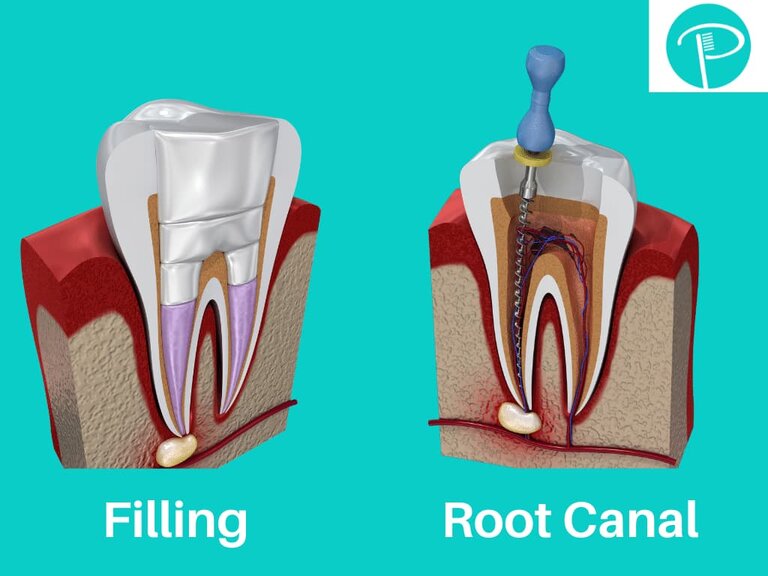What Can Cause Root Canals
Last updated : June 14, 2023Posted by: Newton Dentistry

Do you know what causes root canals? A patient’s dental pain attributes to a tooth infection in some situations. Inside each tooth’s root canal, or “inner chamber,” there is an established bacterial colony that thrives. Pain may arise from an enlarged pulp of the tooth, which puts pressure on the nerves.
The pain is just one of several issues. Infections in the mouth, such as cavities, can damage the tooth’s walls. One or more of the teeth may become infected. The following outcomes are therefore possible:
- Tooth pain or sensitivity
- Out of ordinary flavors
- Facial swelling
It would be best to address infected root canals in teeth as soon as possible.
How Do Root Canal Treatment Work?
It’s possible to treat an infected tooth by performing a root canal procedure:
1) Take as much sedative as you need to feel at ease.
2) To access the pulp chamber, you’ll need various tools.
3) Disinfect the region after removing all bacteria and tissue.
4) Prevent further decay by applying a dental sealant to the exposed root.
5) Adding a dental crown to the previously described tooth will prevent the height from further damage.
Reasons Why Root Canals Are Necessary
Too save your tooth! When bacteria infiltrate the pulp of a tooth, illness results. It could happen for some reasons, including the following:
1) Spillage in the middle of the meal (filling leaks when the side of the filling does not fit tightly against the tooth)
2) You should visit your dentist as soon as possible if you notice a toothache as the first sign of an infected tooth. Pus could build up behind a tooth that a dental infection has injured if you did not treat it quickly.
Different Methods in Performing Dental Root Canals
Root canal treatment (RCT) performs if a tooth infection is discovered and cured. A dental x-ray is needed to determine the root’s anatomy before RCT can begin. At this point, an endodontist may be the ideal person for the job.
It takes roughly an hour to perform a single-rooted tooth root canal therapy (RCT). Still, complicated situations may require multiple visits to the dentist.
A “rubber dam,” a sheet of rubber placed over the tooth to isolate it from saliva and soft tissues, is commonly used in conjunction with local anesthetics. Initially, your dentist will remove the rubber dam from the tooth and drill directly through it to reach the root canal system at the center of the root. After that, she’ll look for entry to the root canal. Before the channels can be cleaned and formed, they must be discovered. The length of the canals can be measured using X-rays or an electronic device.
The canals have been permanently closed to stop the spread of bacteria. Finally, an x-ray can ensure that all channels have been filled and are the proper length.
A crown may be necessary to strengthen and protect your tooth after root canal therapy. Root-filled teeth are more prone to shattering than healthy teeth, which are less susceptible to the phenomenon.
After RCT, you may experience some soreness for a few days, but this should go away, and your tooth should feel normal again.





